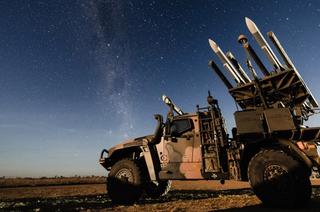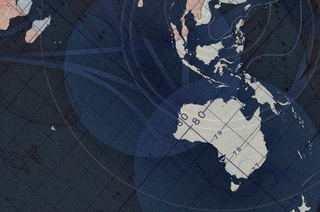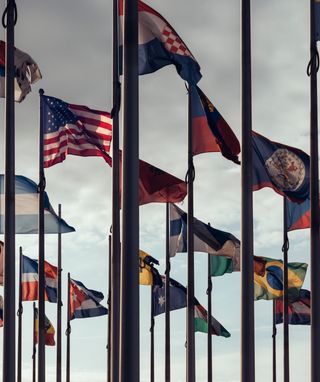The headlines
On his first day in office, President Trump signed an executive order calling for “Reevaluating and Realigning United States Foreign Aid.”
During the 2024 campaign, Trump surrogates highlighted the alleged contradiction of US taxpayers funding relief and aid projects around the world while American citizens were victims of flooding from Hurricane Helene in North Carolina, a swing state. Trump ultimately won North Carolina over Democratic nominee Kamala Harris, 51% to 48%.
Trump himself foreshadowed an assault on aid during consideration of aid to Ukraine a year ago while Joe Biden was president, writing on his own social media platform that “WE SHOULD NEVER GIVE MONEY ANYMORE WITHOUT THE HOPE OF A PAYBACK, OR WITHOUT “STRINGS” ATTACHED. THE UNITED STATES OF AMERICA SHOULD BE “STUPID” NO LONGER!”
In a speech to Congress in March, Trump bragged about his suspension of all aid programs and highlighted what he said were ridiculous examples of foreign aid. One program, USD$10 million for male circumcision in Mozambique, was highlighted as wasteful, even though many studies have shown male circumcision to be a highly effective method of reducing HIV transmission.
For Myanmar earthquake relief, Secretary of State Marco Rubio has suggested that India and China step up and provide assistance, a radical departure from more standard US foreign policy that sought to isolate China, particularly in the Indo-Pacific.
In reality, the Trump administration has not just “reevaluated and realigned” aid programs—it has destroyed them.
After more than 3,000 Burmese were killed in an earthquake this month, the Trump administration fired three American aid workers in the middle of their relief mission to Myanmar. The incident, part of a larger effort to eliminate the US foreign assistance work force, highlights the extreme nature of President Trump’s dismantlement of the US foreign assistance program.
For Myanmar earthquake relief, Secretary of State Marco Rubio has suggested that India and China step up and provide assistance, a radical departure from more standard US foreign policy that sought to isolate China, particularly in the Indo-Pacific.
What is happening behind the headlines
Since taking office, President Trump and his team have effectively shuttered the US government’s primary foreign assistance agency, the US Agency for International Development (USAID). USAID was created in 1961 by President Kennedy and Congress to lead Western efforts to provide aid to the developing world during the Cold War.

Up to 90% of USAID’s grants and contracts have been terminated. Thousands of workers have been laid off. USAID’s global network of missions and offices in developing countries has been eliminated. What’s left of USAID’s work force is in Washington and folded into the State Department.
Beyond USAID, other small aid agencies in Washington have been eliminated. The African Development Foundation (ADF) and the Inter-American Development Foundation (IDF) are shuttered. Notably, ADF has been the subject of multiple investigations of its finances and the personal behavior of senior leadership.Aid related think tanks funded by the US Government, such as the Institute of Peace and the Woodrow Wilson Center, have been stripped of funding and closed. The National Endowment for Democracy, created by President Ronald Reagan forty years ago to support emerging democracies around the world, was nearly starved to death by the Trump administration until pressure from Republican senators resulted in restored funding.
The Trump administration has formally notified Congress of many of these changes and announced that the State Department’s regional bureaus, which have almost no previous programming expertise, will run the reduced, remaining aid portfolio.
Several lawsuits are working their way through US courts, but to date no judge has been willing to fully halt the administration’s destruction of the aid bureaucracy.
With the end of USAID and much of the massive US aid bureaucracy, many in Washington are wondering what will come next.
It is likely that global health programs, including the President’s Emergency Plan For AIDS Relief (Pepfar) and the President’s Malaria Initiative (PMI), both started by President George W. Bush, will survive in some form. These programs have bipartisan support and have produced measurable results. In the case of Pepfar, over 25 million lives have been saved since its inception in 2003.
Trump officials have indicated that they are seeking to end US government support for democracy and human rights programs. Some of these programs have been highlighted by the administration for being “woke” or having other controversial political positions. Others have been controversial in the recipient country, seen as supporting political opponents of the local government.
Structurally, it appears that with the demise of USAID’s missions abroad, the remaining aid programs will be run from Washington. This is a very different model than what the United States has pursued for decades. By having missions in-country, the United States was better able to demand accountability and transparency from contractors and grantees. Monitoring from Washington, and doing so with much less staff, will be harder by orders of magnitude.
Key Trump supporters have indicated that a more transactional approach to aid will be coming – mimicking Trump’s earlier statement during a Ukraine aid debate. Rep. Brian Mast, Republican Chair of the House Foreign Affairs Committee, has said: “I would say that when done right, foreign aid can be one of the best tools. It can help strengthen our relationships with our allies that need a hand up and it can help countries realise that America is the best partner. But it is only true if we understand a couple of things: — what does America actually need from each country or region? — what does that country or region actually want from the United States of America?”
In aid terms, this means “instrumentalization” as in, making aid an instrument of US foreign policy. For many aid professionals, this is problematic, as it means geopolitics, rather than need or ability to absorb, will determine how aid money is spent. Nevertheless, this approach can be successful and indeed, has been a significant component of the US aid program since the Marshall Plan after the end of World War II.
Key debates around the issue
The destruction of aid highlights questions about the role of Congress. It is Congress that allocates funds for foreign assistance, often with great specificity, and occasionally over the objections of presidents. When Trump called for slashing aid levels in his first administration, Congress refused, under the leadership of both Republicans and Democrats, and kept aid budget levels relatively high.
The end of USAID in particular may set up a showdown later this year when Congress acts on 2026 spending bills. With both houses of Congress nearly evenly divided, just a handful of Republicans could cause trouble for the Trump administration by moving to refund and restore USAID or other aspects of the aid program that have been terminated.
Publicly, there is little consequence for the Trump administration. Foreign assistance has never been a popular program and whatever constituency it had among American farmers in particular — because the US government purchased American crops to address famines in other nations — was lost years ago when the US moved to a more local-purchase based model for food assistance.
The implications
There is no question that Trump’s destruction of aid is an unnecessary mistake that will cost the United States influence around the globe. China is taking advantage of the US absence from the playing field. China’s Belt and Road Initiative, already a major factor in strategically-located developing nations like Egypt, Georgia and Kazakhstan, will now face much less competition from Washington in dozens of developing countries.
Nevertheless, the Trump administration will still have billions of dollars in foreign assistance to program. Even the budget introduced by the conservative House Freedom Caucus had up to US$35 billion for foreign aid next year. Entrepreneurial and diplomatically nimble nations may have a great opportunity to influence US aid spending. By making a case for investments in the Indo-Pacific, and perhaps committing some of its own funds, Australia may be able to partner with the Trump administration in smart programs that push back against Chinese imperialism.
What to watch moving ahead
By mid-2025, it will become more clear how the Republican Congress will address Trump’s aid cuts. Spending measures in both the House and Senate will have indicated what next year’s program will look like. Meanwhile, Trump’s restructuring of aid bureaucracies should be complete around the same time. During the summer, look for there to be new Trump initiatives and approaches to countering China in particular. The US Development Finance Corporation, a business-oriented foreign aid agency created during the first Trump administration, could win significantly more budget authority and become the focus of efforts to press back against Beijing.
What should allies like Australia do about it?
American allies, particularly Australia, should engage with the State Department to advocate for American aid programs that benefit their national security — many of which could be saved from the chopping block. Due to massive personnel cuts, the Trump administration will not have the programming capacity necessary to properly run a global program.To help the U.S. deal with this problem, Australia might suggest that the US government contribute dollars directly to Australian government aid programs in the Indo-Pacific.
Unpacking Trump 2.0









